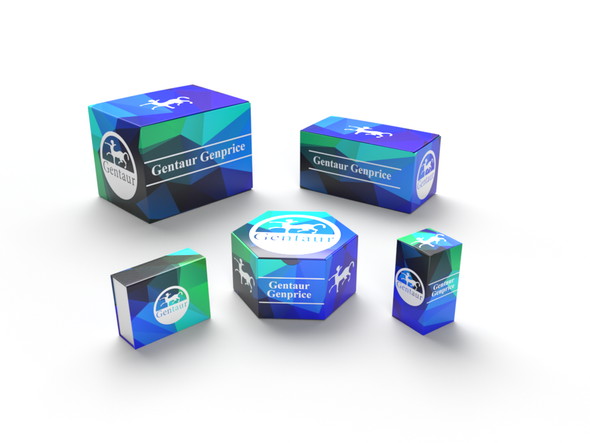740
Bovine Glutamyl-tRNA (QRSL1) ELISA Kit | AE24851BO
- SKU:
- 740-AE24851BO
- Availability:
- Usually ships in 5 working days
Description
Bovine Glutamyl-tRNA (QRSL1) ELISA Kit | AE24851BO | Gentaur UK, US & Europe Distribution
Species Reactivity: Bovine (Bos taurus; Cattle)
Abbreviation: QRSL1
Alternative Name: DKFZp564C1278; FLJ10989; FLJ12189; FLJ13447; GatA;
Application: ELISA
Range: Request Information
Sensitivity: Request Information
Intra-Assay: ≤6.4%
Inter-Assay: ≤11.5%
Recovery: 1, 12
Sample Type: Serum, Plasma, Other biological fluids
Detection Method: Sandwich
Analysis Method : Quantitive
Test Principale: This assay employs a two-site sandwich ELISA to quantitate QRSL1 in samples. An antibody specific for QRSL1 has been pre-coated onto a microplate. Standards and samples are pipetted into the wells and anyQRSL1 present is bound by the immobilized antibody. After removing any unbound substances, a biotin-conjugated antibody specific for QRSL1 is added to the wells. After washing, Streptavidin conjugated Horseradish Peroxidase (HRP) is added to the wells. Following a wash to remove any unbound avidin-enzyme reagent, a substrate solution is added to the wells and color develops in proportion to the amount of QRSL1 bound in the initial step. The color development is stopped and the intensity of the color is measured.
Product Overview: QRSL1 belongs to the amidase family, similar to glutaminyl-tRNA synthetase. Glutaminyl-tRNA synthetase is a class Ic synthetase and shows several similarities with glutamyl-tRNA synthetase concerning structure and catalytic properties. It is an alpha2 dimer. Glutaminyl-tRNA synthetase is a relatively rare synthetase, found in the cytosolic compartment of eukaryotes, in Escherichia coli and a number of other Gram-negative bacteria, and in Deinococcus radiodurans. In contrast, the pathway to Gln-tRNA in mitochondria, Archaea, Gram-positive bacteria, and a number of other lineages is by misacylation with Glu followed by transamidation to correct the aminoacylation to Gln. A stable glutaminly-adenylate analog, which inhibits GlnRS with a Ki of 1.32 microM, was synthesized and cocrystallized with GlnRS and tRNA2Gln.
Stability: The stability of ELISA kit is determined by the loss rate of activity. The loss rate of this kit is less than 5% within the expiration date under appropriate storage condition. The loss rate was determined by accelerated thermal degradation test. Keep the kit at 37°C for 4 and 7 days, and compare O.D.values of the kit kept at 37°C with that of at recommended temperature. (referring from China Biological Products Standard, which was calculated by the Arrhenius equation. For ELISA kit, 4 days storage at 37°C can be considered as 6 months at 2 - 8°C, which means 7 days at 37°C equaling 12 months at 2 - 8°C) .






